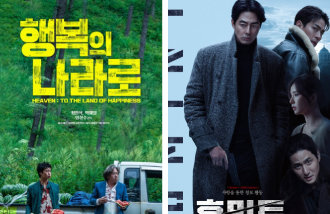One photograph¡¯s impact is immense
One photograph¡¯s impact is immense
Posted October. 04, 2000 13:51,
That twisted face of a boy named Ramy is hardly erasable. A horror-stricken child crouching on the wall in a street of the Gaza district of Palestine reverberating with gunshots; the shriek of his father to spare him is drowned out by the cracks of the bullets raining down.
Ramy dropped his head -- dying from a gunshot that went through his belly. What thought crossed his mind when the boy met with death? The scene raises a crucial question as to what is war and hatred all about. The pathetic sight of a few seconds captured by a French television cameraman aroused the fury of the Arabs.
A news picture is a confrontation with the moment of truth. To capture the momentary look of the time and to record the heartbreaking sight of reality the photographer risked his life. And this breathtaking capture might move the titan of history.
So was the picture of a Vietnamese police chief summarily executing a Vietcong. The police officer points his revolver at the temple of a Vietcong prisoner, who scowls with fear. The instant the trigger was pulled the poor soul falls to the ground, bleeding. The Pulitzer prize-winning photo supplied much ammunition for subsequent antiwar movement in the United States.
A picture of a girl hit by a napalm bomb that also won a Pulitzer prize changed the tide of history. When a napalm bomb is dropped from an American airplane on a Vietnamese village, a 9-year-old girl, burned all over and naked, dashes out screaming. This gruesome sight of a fleeing girl added fuel to the antiwar public opinions in and out of the United States.
Another Pulitzer prize-winning 1994 photo of starved children in Sudan spotlighted the misery of starvation in Africa. A big vulture awaiting the death of an infant girl, reduced to a bag of bones and staggering -- but the cameraman who took this picture was condemned for his callousness in neglecting to rescue the girl from death before pressing the camera shutter, causing him to kill himself in the end.
Photography is a colored sketch of the times. Response grows more powerful as the message of questioning humanity is stronger. The more it strikes at the fundamental problems of life, death, war, hatred and conflict, the bigger comes the echo.
The Arabs who watched the death of Ramy on television are crying out for the demolition of Israel. The hearts of the world looking at the rising cloud of bloody war are fearful and complex. How many more peers of Ramy will have to shudder with horror and perish?
Kim Choong-Seek seescheme@donga.com







